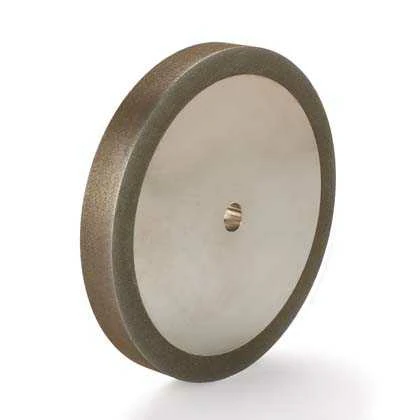Understanding the Properties and Applications of Grinding Wheels
Introduction
Grinding wheels are essential tools in various industries, including manufacturing, metalworking, and construction. They are used for a wide range of applications, such as cutting, shaping, and finishing materials. To maximize the effectiveness and efficiency of grinding operations, it is crucial to have a deep understanding of the properties and applications of grinding wheels. This article aims to explore these aspects in detail.
Abrasive Materials
Grinding wheels are composed of abrasive materials that are capable of removing material from the workpiece through friction. The choice of abrasive material depends on the specific application and the material being worked on. Some common abrasive materials used in grinding wheels include aluminum oxide, silicon carbide, and diamond.
Aluminum oxide is the most commonly used abrasive material due to its versatility and cost-effectiveness. It is suitable for grinding ferrous metals, non-ferrous metals, and non-metallic materials. Silicon carbide, on the other hand, is harder and more brittle than aluminum oxide. It is primarily used for grinding non-ferrous metals and non-metallic materials that require sharp cutting edges.
Diamond is the hardest known material and offers superior performance in grinding applications. Its exceptional hardness and thermal conductivity make it ideal for grinding hard and brittle materials, such as ceramics, glass, and advanced composites. However, diamond grinding wheels are more expensive and require special considerations, including coolant and proper handling to avoid damage.
Bonding Agents
The abrasive materials in grinding wheels are held together by a bonding agent, which provides structural integrity and controls the wheel’s performance characteristics. The choice of bonding agent depends on factors such as the type of abrasive material and the desired grinding application.
Resin bonds are the most commonly used bonding agents due to their versatility and ability to provide a fine surface finish. They are suitable for general-purpose grinding operations and are compatible with various abrasive materials. Vitrified bonds, on the other hand, are made from a mixture of ceramic materials and offer excellent heat resistance and strength. They are commonly used for precision grinding applications.
Other types of bonding agents include rubber bonds, which are used for snagging and cutting-off operations, and metal bonds, which are used for grinding applications that require high removal rates and precise control. Each bonding agent has its own advantages and limitations, and selecting the appropriate bond is essential for achieving optimal grinding results.
Wheel Shapes and Sizes
Grinding wheels come in a variety of shapes and sizes, each designed for specific applications. The shape of the wheel determines the type of grinding operation it is suitable for, such as surface grinding, cylindrical grinding, or tool and cutter grinding.
Common wheel shapes include flat, cylinder, cup, and dish. Flat wheels are used for surface grinding and provide a large contact area for efficient material removal. Cylinder wheels are used for grinding cylindrical surfaces, while cup wheels are suitable for grinding curved or concave surfaces. Dish wheels are used for tool and cutter grinding, providing a narrow contact area for precise cutting edges.
Wheel sizes are specified by their diameter, thickness, and hole size. The choice of wheel size depends on factors such as the size of the workpiece, the desired surface finish, and the machine’s capabilities. It is important to select the correct wheel size to ensure safe and efficient grinding operations.
Conclusion
In conclusion, understanding the properties and applications of grinding wheels is crucial for achieving optimal grinding results. The choice of abrasive material, bonding agent, wheel shape, and size depends on factors such as the specific application, the material being worked on, and the desired surface finish. By selecting the appropriate grinding wheel and using it correctly, industries can enhance productivity, improve quality, and maximize the lifespan of their equipment.
.webp)
